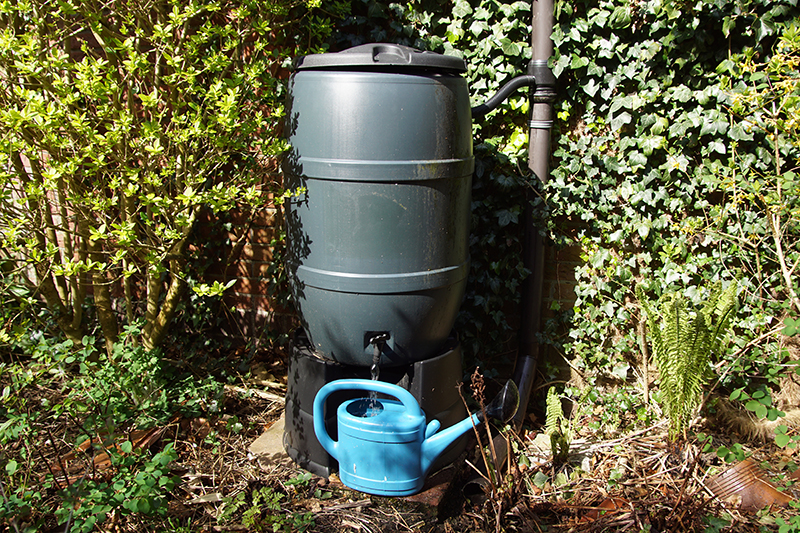Disinfecting Rain Barrels to Stay Safe

With our heightened awareness on hygiene, we’re also thinking about how to disinfect our rain barrels before using them for the upcoming season. If there is any concern that organic debris, sediment, or dust entered the barrel during the previous growing season, disinfection will be necessary. It’s also a good time to do any maintenance on the barrel, such as installing a new mesh screen. Implementing good cultural practices (like keeping trash out of the barrel) is important for reducing any pathogen contamination so that gardeners always stay safe.
In addition to cultural practices, researchers recommend chemical treatment of rain barrel water before irrigating a garden grown for consumption, to reduce the risk of exposure to harmful pathogens.
Rain barrel users should make sure to clean the barrel with a 3% bleach solution before collecting water to irrigate a vegetable garden. Household, unscented bleach with a 5-6% chlorine solution can be added at the rate of 1/8 teaspoon per gallon (8 drops.) Water in a typical 55 gallon rain barrel should be treated with approximately 1 ounce of bleach. Do not use any scented bleach.
Wait approximately 24 hours after the addition of bleach to allow the chlorine to dissipate before using the water. It should be noted that household bleach is not labeled for use in water treatment by the Food and Drug Administration, although it is frequently recommended for emergency disinfection of drinking water (USEPA, 2006b).
If using bleach is undesirable you can substitute hydrogen peroxide which acts as a mild antiseptic and comes in a 3 percent solution (labeled for household use.) Use 1 cup per gallon of water, slosh around in the barrel to coat all surfaces, and then dump the water and rinse or let air dry. Although 100% biocompatible, this solution is intended to deeply disinfect, and it will harm plants, so be cautious and be sure to wear gloves!
Additionally, a half-gallon of vinegar and a box of baking soda in a barrel one-quarter full of water will create a foam mighty enough to clean a barrel. The foam removes any algae or mold that has formed inside the barrel. Just slosh the solution around by rolling the barrel, then rinse and allow to dry before refilling.
Hydrogen peroxide can often also be used in place of bleach if you’ve run out of disinfecting wipes or sanitizing gels. Pour the 3% undiluted hydrogen peroxide into a spray bottle and spray it on the surface to be cleaned, but let it sit on the surface. It’s not corrosive like bleach, so it’s safe for tools. You can actually pour it over the tools and you don’t have to wipe it off, it decomposes into oxygen and water.
Implementing good cultural practices is also important for reducing the pathogen contamination. Harvested rainwater from a rain barrel should only be used for non-foliar applications on vegetable gardens possibly through drip irrigation. Water should be applied in the morning. Harvesting should not take place right after watering in order to benefit from leaf drying and ultraviolet light disinfection.
The above information is an excerpt from a Q&A by Brenda Dahlfors, Program Coordinator, Horticulture, University of Illinois Extension, Lake/McHenry Unit. Additional information was found here:https://www.consumerreports.org/cleaning/common-household-products-that-can-destroy-novel-coronavirus/
